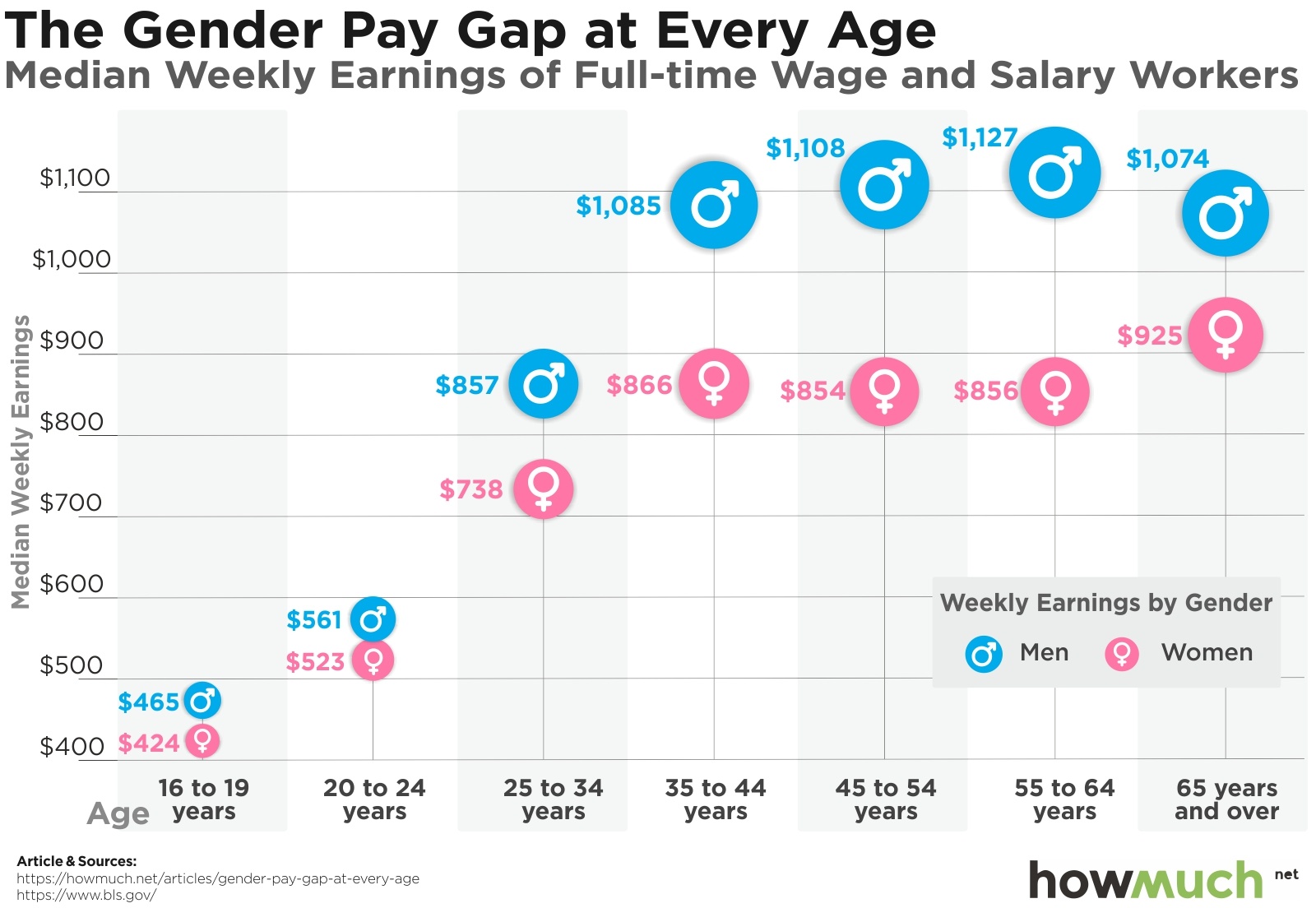“Equal pay for equal work.”
That was the slogan rocking corporate America in the 1960s as women demanded more money for performing the same jobs as men. Several decades later, the gender pay gap is still alive and well, and in fact it gets worse over time.
 We collected the data for our visualization from the Bureau of Labor Statistics (BLS), perhaps the most impartial source for wage figures. The numbers represent median weekly income for men and women for both salary and hourly employees for the second quarter of 2018, not seasonally adjusted. Even this quick snapshot reveals several key characteristics about the economy overall and individual earning potential.
We collected the data for our visualization from the Bureau of Labor Statistics (BLS), perhaps the most impartial source for wage figures. The numbers represent median weekly income for men and women for both salary and hourly employees for the second quarter of 2018, not seasonally adjusted. Even this quick snapshot reveals several key characteristics about the economy overall and individual earning potential.
Let’s start by taking a step back from the gendered dynamic of our numbers. The same general trendline applies for both men and women, the years of fastest wage growth occurs for people 20 to 44 years of age. This makes a certain amount of sense—a lot of workers graduate from college or some other specialized program, get a few years of experience, and perhaps job hop to another employer. Interestingly, median wages for both men and women level out after 45 years old, ticking slightly up for men and actually declining for women until much later in life. Perhaps people are taking less risks in their careers as they settle down and have children, or perhaps employers just don’t need to pay older workers a lot more for 30 years of experience as opposed to 10.
There is nonetheless a striking separation between the median wages for men and women during young and middle adulthood. Men between 25-34 years of age make $119 more than women per week, but take a look at the next age bracket. The difference shoots even further up to $219. The gap continues to grow throughout life, reaching its largest point for 55-to-64-year-olds at $271 before declining to $149 for those 65 and older.
Observers have spilled a lot of ink trying to explain these numbers. Some attribute the gap to differences in career choices, educational backgrounds and parenting practices. There might be different factors contributing to the gap at different points in time. Look at the numbers for the youngest workers, those between 16-19 years old. What could possibly account for the difference of $41 between people with zero career experience and the exact same education level? Teenage birth rates are lower than they’ve been in at least 25 years, so having kids is a vanishingly rare possible explanation. Indeed, perhaps we should simply label the persist gap in wages for men and women year after year exactly what it is—gender pay discrimination, plain and simple.
Data: Table 1.1
About the article
Authors
Irena - Editor





